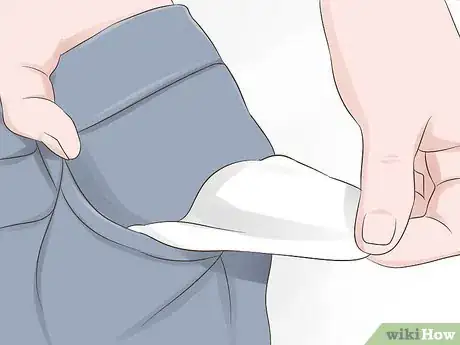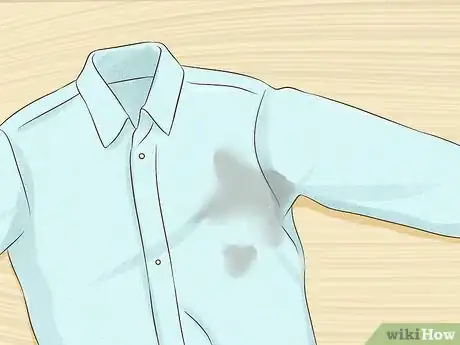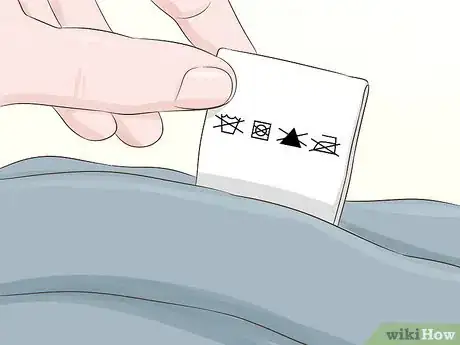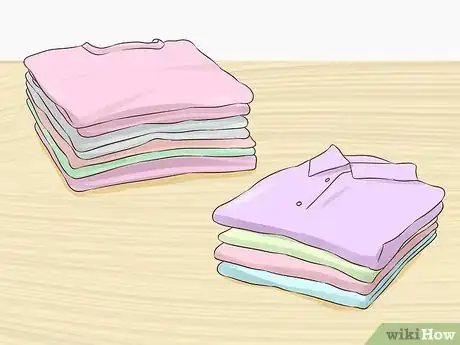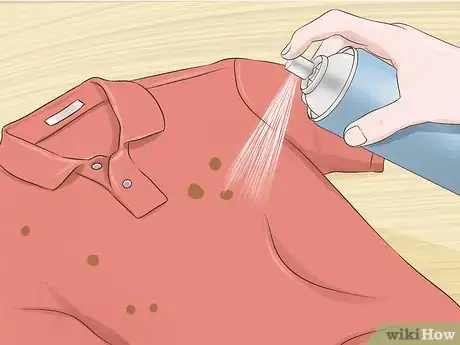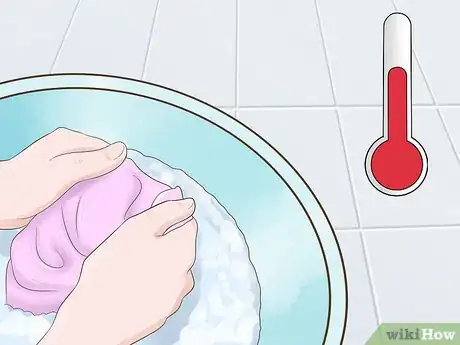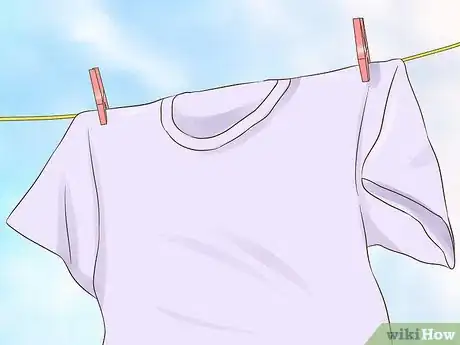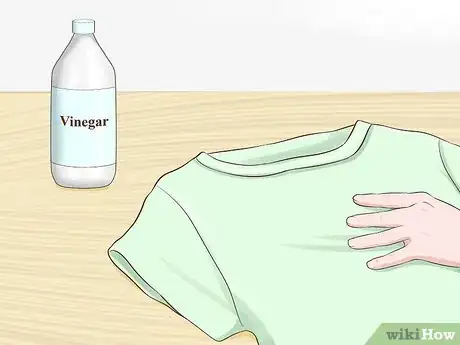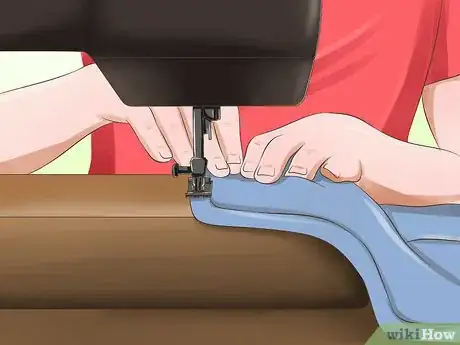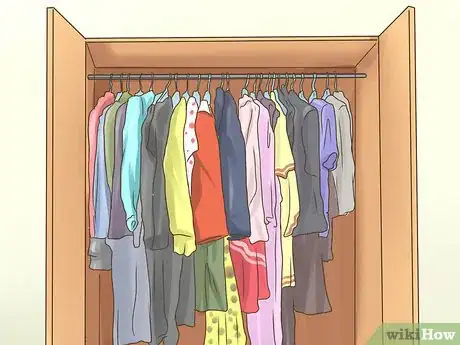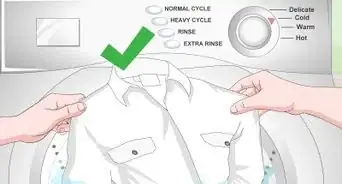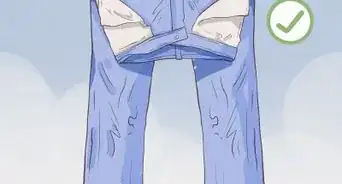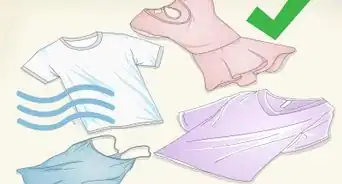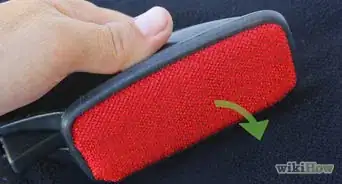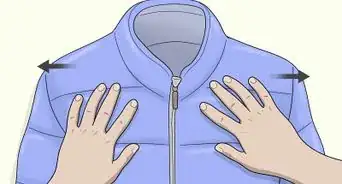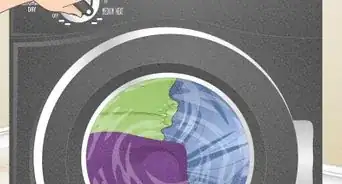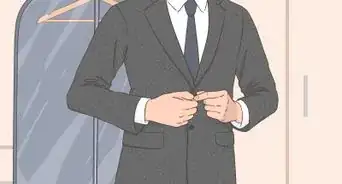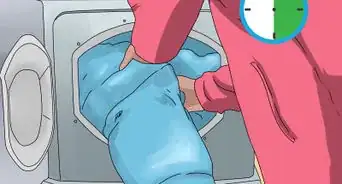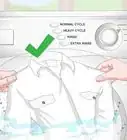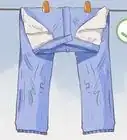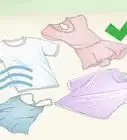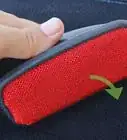This article was co-authored by Susan Stocker. Susan Stocker runs and owns Susan’s Green Cleaning, the #1 Green Cleaning Company in Seattle. She is well known in the region for outstanding customer service protocols — winning the 2017 Better Business Torch Award for Ethics & Integrity —and her energetic support of green cleaning practices.
There are 7 references cited in this article, which can be found at the bottom of the page.
This article has been viewed 65,047 times.
Thrift store clothes are a great alternative to buying clothes new from a clothing retailer. Not only will you save money by buying thrift store clothes, but you might also be able to contribute to a charity by purchasing them. One of the downsides of thrift store clothes, though, is that they are often dirty or smelly when you get them. This is because very often they’ve been sitting unused in a closet or in a drawer in someone’s home. In addition, they’ve probably sat in a thrift store for a while waiting for someone to buy them. Fortunately, with a little knowledge and time, you’ll be able to clean thrift store clothes.
Things You Should Know
- It’s important to check your clothes’ tags, pockets, and overall quality so they’re prepared for a clean.
- Then, you’ll need to clean stains, wash your clothes, and finally, wait for your pieces to dry.
- Thrifted clothes may need a little extra love—so take steps to remove bad smells, fix torn fabric, and store them with special care.
Steps
Preparing Clothes to be Cleaned
-
1Search pockets. One of the first steps you need to take when cleaning thrift store clothes is to search the pockets. This is important, as previous owners may have left items in the pockets. Such items, if left in the pockets, could damage your new clothing when you go to wash it.
- Remove any items like pens, money, hair ties, or anything else.
- Turn the pockets inside out so you know whether you’ve searched that article of clothing already.
-
2Examine the clothes. After searching pockets, you should take a minute to examine the clothes really carefully. Examining your clothes is important, as depending on their age and condition, you might need to take specific steps to safeguard them. There are a number of things you’ll need to look for when examining your thrift store clothes:
- Stains that should be treated.
- Rips or tears that need to be repaired.
- Worn out fabric that should be patched or replaced.
- Delicate fabric that needs to be handled with care.[1]
Advertisement -
3Read the care labels on the clothes. Before taking any action to clean the clothes, you need to read the care tags carefully. Care tags are included on almost all mass produced clothes and will provide instructions for how to clean and care for the clothing.
- Care tags are often located on the back collar of shirts and blouses, or on the middle of the back waist on pants.
- Homemade and boutique clothes may not have care tags. In this case, use your best judgement to determine the fabric and how to care for it. If you’re not sure, you should probably just dry clean the item.
- When looking at care tags, identify instructions about the temperature of water you need to use when washing your clothes, instructions for drying your clothes, instructions for bleaching your thrift store clothes, and instructions about how to iron your clothes.[2]
-
4Sort your clothes. Based on the care labels and other factors, you need to sort your clothes and create several piles. By sorting your clothes, you’ll make sure that clothes are washed and dried appropriately.
- Sort by colors. While thrift store clothes have probably been laundered and may not run, you should still sort by colors. This will make sure you preserve lighter colored fabrics.
- Sort by fabric. Different fabrics, like cottons, should be washed together.
- Make a pile for special needs fabrics like silk, wool, or velvet. These will very often need to be dry cleaned. Consult the care tag if you have any doubt.
- Create a pile for delicate or vintage fabrics. These fabrics may need to be dry cleaned, or at the very least washed by themselves.[3]
Cleaning Your Clothes
-
1Treat any spots you may have identified. The first step in cleaning your clothes will be to treat any spots you've found. This is important, as washing the clothes before treating spots may make those spots set. If you do this, spots will be a lot harder to get out.
- Use “Spot Shot” or another stain removing product on spots you think can be removed.
- Consult a dry cleaner. Dry cleaners may have an idea of whether you should treat a specific spot.
- Think about using bleach on soiled or dirty white fabrics.[4]
-
2Wash your clothes using appropriate temperature water. Depending on the age and fabric of your clothes, you‘ll have to use an appropriate water temperature to wash them. If you don’t, you might shrink the clothes or damage the material.
- Wash cottons in cold, as hot water may shrink them.
- Wash colored fabrics in cold water, as hot water may make them run.
- Consider washing pre-shrunk or synthetic fabrics in warm water.
-
3Dry your clothes. After washing your clothes, you’ll need to dry them. Drying your clothes appropriately is also important in making sure you properly clean and preserve your new threads. Ultimately, if you dry your clothes improperly, you could damage them.
- Always make sure to dry clothes appropriately and follow the care tag on your new clothes.
- There are a number of materials you should never put in the dryer, including: bathing suits, bras, and certain embellishments like sequins.
- Hang dry any clothes or materials you have a doubt about.[5]
Seeing to the Details
-
1Remove smell. Finally, after you’ve washed your clothes, you might need to take extra steps to clean or remove smells from your thrift store clothes. This is important, as some scents may persist through a normal wash. There are a number of ways to remove the smell from thrift store clothes:
- Use activated charcoal or kitty litter. Place your cloths in a plastic bag and place the bag in air tight plasticware for a couple of days with activated charcoal or kitty litter. The charcoal or kitty litter will remove scents from your clothes. Remember, though, don't let the kitty litter or charcoal come into direct contact with your clothing.
- Steam your thrift store clothes. Steaming your clothes might help remove old smells or bad scents.
- Dab your clothes with white vinegar. In many cases, acidic white vinegar will help remove smells from old clothes. This works best with newer white clothing, but may be too abrasive for delicate darks.[6]
-
2Replace material that is falling apart. Another important element of cleaning thrift store clothes is replacing parts of your new clothing that are faulty or falling apart. By replacing problematic parts, you’ll help restore your clothes, make sure they’re clean and new looking, and you’ll prolong the life of them.
- Remove any buttons or ribbons that are stained or torn.
- Patch or sew shut any rips or tears in your new clothing.
- Mend torn seams and any other parts that need to be repaired.
-
3Store your clothes appropriately. Finally, the last part of making sure your thrift store clothes are clean is to store them properly. By storing them properly, you’ll keep them clean and prevent them from developing new smells.
- Hang your clothes in your closet. By hanging your clothes, you’ll make sure that they can air out and don’t get musty in a drawer.
- Place a deodorizer in your closet.
- Make sure your closet is cool and has low humidity. Having a cool closet with low humidity will prevent the growth of mold and mildew, and slow the deterioration of your clothes.[7]
Expert Q&A
-
QuestionHow do you remove mold spores from clothing?
 Susan StockerSusan Stocker runs and owns Susan’s Green Cleaning, the #1 Green Cleaning Company in Seattle. She is well known in the region for outstanding customer service protocols — winning the 2017 Better Business Torch Award for Ethics & Integrity —and her energetic support of green cleaning practices.
Susan StockerSusan Stocker runs and owns Susan’s Green Cleaning, the #1 Green Cleaning Company in Seattle. She is well known in the region for outstanding customer service protocols — winning the 2017 Better Business Torch Award for Ethics & Integrity —and her energetic support of green cleaning practices.
Green Cleaning Expert Hot water and vinegar is amazing at this! Vinegar kills about 80% of mold spores, so it’s truly wonderful and will also help with the unpleasant moldy smell. Do the wash using only vinegar (pour the vinegar directly into the load of laundry—not the dispenser). Once it’s filled with hot water, pause the cycle for about an hour and let the vinegar work its magic. Then let the cycle finish, and rerun a second cycle using regular detergent as well as non-chlorine bleach.
Hot water and vinegar is amazing at this! Vinegar kills about 80% of mold spores, so it’s truly wonderful and will also help with the unpleasant moldy smell. Do the wash using only vinegar (pour the vinegar directly into the load of laundry—not the dispenser). Once it’s filled with hot water, pause the cycle for about an hour and let the vinegar work its magic. Then let the cycle finish, and rerun a second cycle using regular detergent as well as non-chlorine bleach. -
QuestionHow do I whiten white clothes?
 Susan StockerSusan Stocker runs and owns Susan’s Green Cleaning, the #1 Green Cleaning Company in Seattle. She is well known in the region for outstanding customer service protocols — winning the 2017 Better Business Torch Award for Ethics & Integrity —and her energetic support of green cleaning practices.
Susan StockerSusan Stocker runs and owns Susan’s Green Cleaning, the #1 Green Cleaning Company in Seattle. She is well known in the region for outstanding customer service protocols — winning the 2017 Better Business Torch Award for Ethics & Integrity —and her energetic support of green cleaning practices.
Green Cleaning Expert Non-chlorine bleach is always my go-to for whitening whites. You also want to use very hot water.
Non-chlorine bleach is always my go-to for whitening whites. You also want to use very hot water.
References
- ↑ http://www.moneycrashers.com/make-most-thrift-store-clothes/
- ↑ http://www.textileaffairs.com/lguide.htm
- ↑ https://www.rinse.com/which-pieces-you-should-and-shouldnt-dry-clean/
- ↑ http://www.cleaninginstitute.org/clean_living/stain_removal_chart.aspx
- ↑ http://www.goodhousekeeping.com/home/cleaning/a34808/what-not-to-put-in-your-dryer/
- ↑ http://www.racked.com/2014/10/27/7571855/thrift-store-vintage-clothing-stain-removal
- ↑ https://consumerist.com/2014/03/06/9-things-to-keep-in-mind-when-storing-your-winter-clothes-in-case-winter-ever-ends/
About This Article
If you've bought some clothes from a thrift store, you’ll want to wash them well before you wear them so they look and smell fresh. First, check the pockets to make sure there’s nothing inside to damage your washer. If the clothes are stained, pre-treat them with a stain remover and leave them to sit for a few minutes. Check the labels to find out what temperature and washing cycle you should use. In general, you want to wash cotton, colored fabrics, and delicate items in cold water so you don’t shrink them. Consult the labels to see how you should dry them too. If they still smell when they come out, dab a little white vinegar on the material to help remove the scent. For more tips, including how to store your thrift store clothes, read on!
